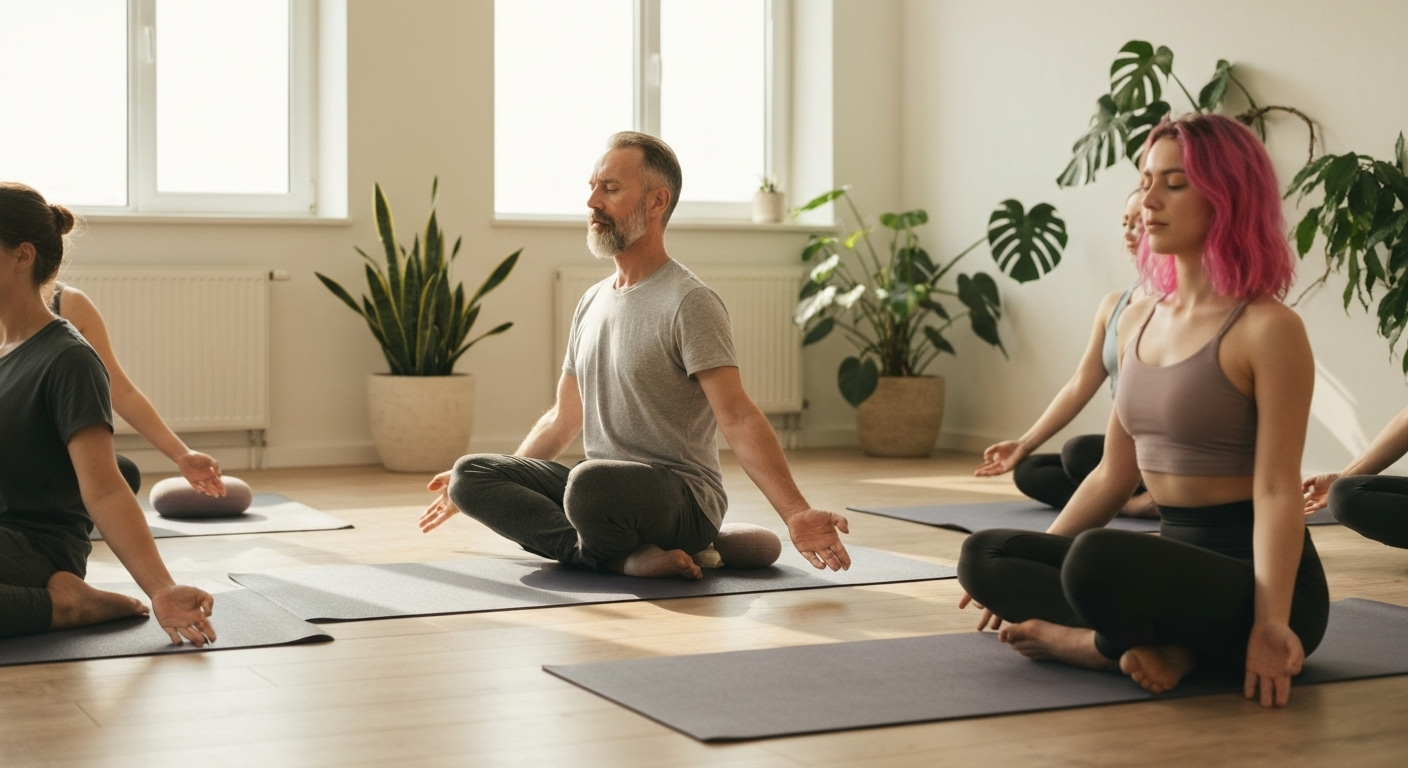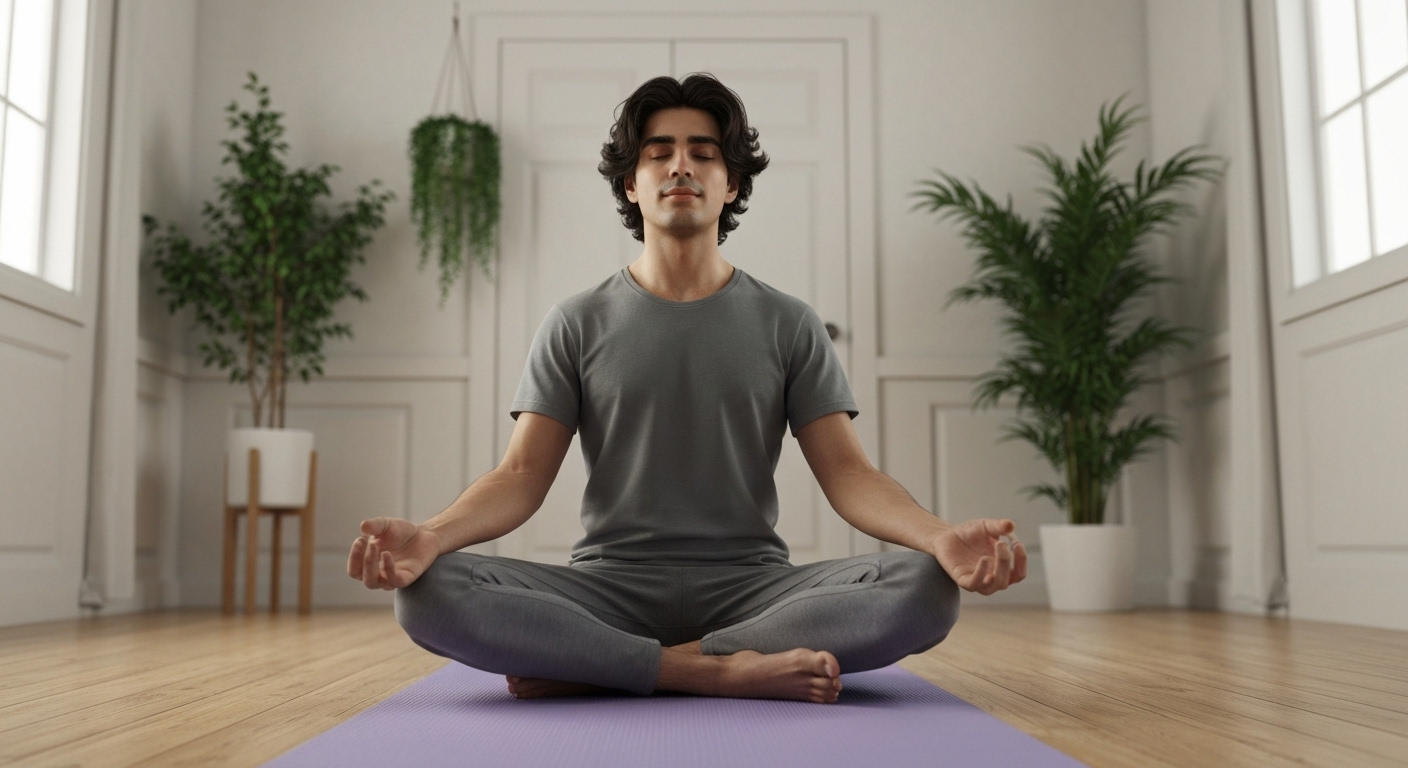How to Build a 15-Minute Morning Yoga Routine That Sticks
| By Pradeep P | 0 Comments

Moving your body around in the morning is a fantastic way to start your day. Morning yoga wakes up the body, clears the mind, and establishes a clear tone for the day ahead. One of the best things you can do for your health every day is to do yoga in the morning. It has been proved to increase focus, support posture, and lower stress.
But for many of us, the idea of fitting in a full 60-minute class before work or school feels impossible. That’s where a 15-minute yoga sequence in the morning comes in. It’s short enough to be doable, but long enough to be helpful. And yes, 15 minutes is enough time to start getting stronger, more flexible, and more consistent.

The Benefits of a Short Morning Practice
Boosts Energy and Focus
Is yoga really better than coffee? While nothing can replace your morning latte, yoga stimulates blood flow, improves oxygen circulation, and activates your nervous system in a way caffeine can’t. After just 15 minutes, most people feel more awake, energised, and centred — without the mid-morning crash.
Sets a Positive Tone for the Day
Instead of diving straight into emails, starting the day with mindful movement creates space for you. This tiny act of self-care changes the way you think, lowers your stress, and helps you see your work clearly.
Fits into Busy Schedules
One of the most common questions is: how can I fit yoga into a busy morning? A short yoga practice is easy to slot in before a shower, after breakfast, or while the kids are still getting ready. Because it only takes 15 minutes, you don’t need to wake up much earlier — making it a sustainable morning yoga habit.
Supports Posture, Mobility, and Digestion
Morning stiffness is common. A simple morning yoga routine can help your spine stay straight, loosen up your hips and shoulders, and get you in a good posture before you even sit down at your computer. Forward folds and twists also help your digestion in a gentle way, which makes your body feel lighter and more balanced all day.
Reduces Stress and Cortisol
Research shows that yoga reduces cortisol, the stress hormone often elevated in the morning. By combining breathwork with gentle yoga, you calm your nervous system, which sets you up to respond to challenges with greater ease.
Improves Sleep Quality
It might seem counterintuitive, but practising yoga in the morning can improve how you sleep at night. By moving your body early, you regulate your circadian rhythm — helping you feel naturally more awake in the morning and ready to wind down in the evening.

Building Your 15-Minute Morning Yoga Routine
Choose Simple, Repeatable Poses
What are the best poses for a short morning yoga routine? The key is to pick 5–7 accessible poses that you can remember without constant reference to a video.
- Cat-Cow warms the spine and connects breath with movement.
- Downward Dog lengthens the hamstrings and wakes up the shoulders.
- Warrior II builds focus, stability, and confidence.
- Seated Twist stimulates digestion and spinal health.
Make sure your sequence stays the same so that it becomes second nature, like brushing your teeth.
If you want to explore deeper practice beyond short routines, our yoga retreats in Goa offer immersive experiences with daily classes.
Include Breathwork and Gentle Movement
Breath is what turns stretching into yoga. To get from resting to doing something, start with 1–2 minutes of deep breathing, like diaphragmatic breathing. Gentle movements like shoulder rolls and side stretches get your body ready for greater postures.
End with a Moment of Stillness
Even one minute of stillness can transform your practice. Sit comfortably, close your eyes, and focus on breathing deeply. You might choose to set a daily intention (“Today, I’ll move with ease”) or simply enjoy the pause before stepping into your day.

Sample 15-Minute Morning Yoga Sequence
This sequence is beginner-friendly, perfect for busy mornings, and requires only a mat!
3-Min Gentle Warm-Up
- Seated Neck Rolls (1 min) — Relieves tension built overnight.
- Cat-Cow Stretch (2 min) — Mobilises spine, shoulders, and hips while connecting breath with movement.
9-Min Flow and Poses
- Downward-Facing Dog (1 min) — Press heels toward the floor to stretch calves and hamstrings, while lengthening the spine.
- Low Lunge with Side Stretch (1 min each side) — Opens hips and side body, countering morning tightness.
- Warrior II (1 min each side) — Strengthens legs and core, improves focus, and builds stability.
- Standing Forward Fold (1 min) — Releases hamstrings and decompresses the spine.
- Seated Twist (30 sec each side) — Stimulates digestion and supports spinal mobility.
3-Min Closing Breath and Stillness
- Easy Seated Pose (2 min) — Deep breathing helps settle the nervous system.
- Gratitude Moment (1 min) — Reflect on one thing you’re thankful for, anchoring positivity into your day.

How to Make Morning Yoga a Daily Habit
Be Consistent
How can I make my morning yoga routine stick? Regularity is the best way to build habits. Pick a time each day, preferably before your first big task, so that your pattern becomes second nature.
Prepare Your Space the Night Before
Lay out your mat and water bottle before bed. By removing tiny obstacles, you reduce friction and increase the likelihood you’ll practise.
Use Habit-Stacking
Pair your practice with an existing habit: for example, unroll your mat right after brushing your teeth. Habit-stacking makes it easier to follow through.
Make It Enjoyable
Morning yoga should feel like a ritual. Play calming music, open the curtains for natural light, or light a candle. Enjoyment builds long-term consistency.
Is 15 Minutes Morning Yoga Enough?
This is one of the most common questions: can 15 minutes of yoga really make a difference? The answer is yes.
Studies suggest that even short, regular workouts can make you more flexible, improve your posture, and lift your mood. Physiotherapists and GPs generally suggest doing 10 to 15 minutes of mobility exercises every day to ease back pain, improve alignment, and stop stiffness. This shows that shorter exercises work.
Longer workouts may be better for you in the long run, but what matters most is doing them regularly, not how hard you work. A 90-minute lesson once is not as helpful as 15 minutes a day, done repeatedly.

Take It Further with ālaya’s 15-Minute Morning Yoga Challenge
If you love the idea of short, powerful practices, ālaya’s 15-Min Morning Yoga Challenge makes it even easier to stay consistent.
7-Day | 15-Min Morning Yoga Challenge
A simple week of short, energising mornings to kickstart your habit. Perfect if you’re new to yoga or want a manageable reset.
30-Day | 15-Min Morning Yoga Challenge
Build a lasting routine with just 15 minutes a day for one month. This option is ideal if you’re serious about creating a sustainable morning yoga habit.
Whichever You Choose, There is a Theme for You
Every week introduces a new focus refresh, and the month as a whole is built around a unique theme — so you’ll never feel stuck in the same flow.
Both challenges are available live or on-demand. You can join at 6:55 AM with a supportive community or use 14-day playback if your schedule changes. Either way, you’ll benefit from structure, accountability, and a practice that evolves with you.
And with ālaya’s 10-day free trial, you can try the Morning Challenge risk-free.
Final Thoughts
Morning yoga doesn’t have to be long or complicated. A simple 15-minute morning yoga routine can give you more energy, improve your posture, and help you start your day with a clear mind. You may make a habit that lasts by making it regular, fun, and a part of your life.
Start small, show up regularly, and let your practice grow with you. If you’re ready to take the next step, join us at ālaya and explore the 15-Min Morning Challenge — live or through playback recording and free to try for 10 days.


















 This September, you can join us to learn how emotional alchemy can help you change how you feel. The journey takes one month, using yin yoga to guide you. It helps you work through your thoughts and turn heavy feelings into wisdom and calm.
This September, you can join us to learn how emotional alchemy can help you change how you feel. The journey takes one month, using yin yoga to guide you. It helps you work through your thoughts and turn heavy feelings into wisdom and calm.

































Recent Comments